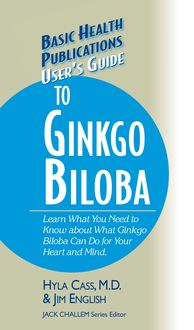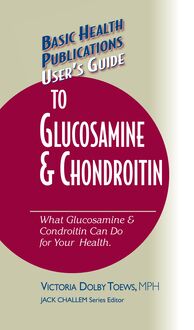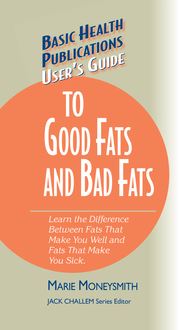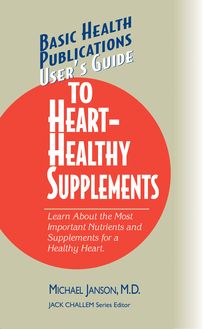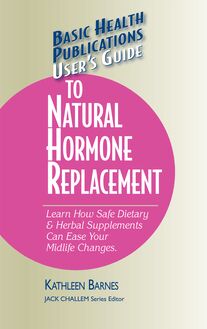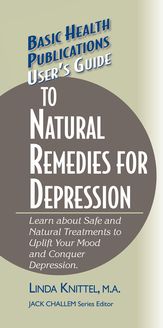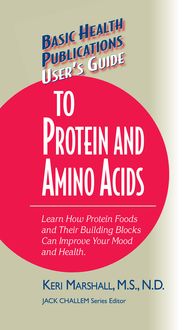-
 Univers
Univers
-
 Ebooks
Ebooks
-
 Livres audio
Livres audio
-
 Presse
Presse
-
 Podcasts
Podcasts
-
 BD
BD
-
 Documents
Documents
-
- Cours
- Révisions
- Ressources pédagogiques
- Sciences de l’éducation
- Manuels scolaires
- Langues
- Travaux de classe
- Annales de BEP
- Etudes supérieures
- Maternelle et primaire
- Fiches de lecture
- Orientation scolaire
- Méthodologie
- Corrigés de devoir
- Annales d’examens et concours
- Annales du bac
- Annales du brevet
- Rapports de stage
La lecture à portée de main
Vous pourrez modifier la taille du texte de cet ouvrage
Découvre YouScribe en t'inscrivant gratuitement
Je m'inscrisDécouvre YouScribe en t'inscrivant gratuitement
Je m'inscrisEn savoir plus
Vous pourrez modifier la taille du texte de cet ouvrage
En savoir plus

Description
Sujets
Informations
| Publié par | Turner Publishing Company |
| Date de parution | 01 septembre 2002 |
| Nombre de lectures | 0 |
| EAN13 | 9781591206071 |
| Langue | English |
Informations légales : prix de location à la page 0,0298€. Cette information est donnée uniquement à titre indicatif conformément à la législation en vigueur.
Extrait
The information contained in this book is based upon the research and personal and professional experiences of the authors. It is not intended as a substitute for consulting with your physician or other healthcare provider. Any attempt to diagnose and treat an illness should be done under the direction of a healthcare professional.
The publisher does not advocate the use of any particular healthcare protocol but believes the information in this book should be available to the public. The publisher and authors are not responsible for any adverse effects or consequences resulting from the use of the suggestions, preparations, or procedures discussed in this book. Should the reader have any questions concerning the appropriateness of any procedures or preparation mentioned, the authors and the publisher strongly suggest consulting a professional healthcare advisor.
Series Editor: Jack Challem
Editor: Roberta W. Waddell
Typesetter: Gary A. Rosenberg
Series Cover Designer: Mike Stromberg
Basic Health Publications User’s Guides are published by Basic Health Publications, Inc.
8200 Boulevard East
North Bergen, NJ 07047
1-800-575-8890
Copyright © 2002 by Hyla Cass and Jim English
ISBN-13: 978-1-59120-607-1
ISBN-10: 1-59120-019-9
All rights reserved. No part of this publication may be reproduced, stored in a retrieval system, or transmitted, in any form or by any means, electronic, mechanical, photocopying, recording, or otherwise, without the prior written consent of the copyright owner.
Printed in the United States of America
10 9 8 7 6 5 4 3 2 1
C ONTENTS
Introduction
1. Discovery of a Living Fossil
2. Ginkgo Biloba and the Brain
3. Ginkgo and the Heart
4. Ginkgo and Sexual Enjoyment
5. Ginkgo and Vision
6. Ginkgo and Hearing Disorders
7. Ginkgo’s Other Health Benefits
8. How to Select and Use Ginkgo
9. Ginkgo Safety and Cautions
Conclusion
Selected References
Other Books and Resources
I NTRODUCTION
G inkgo biloba is the best-selling prescription herb in Europe, the fifth most widely used herb in the United States, and one of the most highly sought-after herbs in the world, all for good reason. It became one of the most highly prized natural supplements because of its proven effectiveness for enhancing memory and mental function, improving blood circulation to the brain, reducing inflammation, relieving allergies and asthma, and protecting the body from the effects of aging. Ginkgo’s well-earned reputation is supported by more than thirty years of scientific and clinical research. In this book, we are going to outline a number of these studies and let you see for yourself the important benefits this magnificent herb has to offer.
A major health threat facing humans, especially aging baby boomers now entering middle age, is the decline in their mental abilities. The decline was traditionally accepted as a normal part of the human aging process, but that idea is now being discarded as an outmoded concept, and treatment for this formerly accepted process is now regularly sought out. The result is that healthcare providers and medical professionals are struggling to cope with the growing flood of older people and their caregivers all looking for ways to treat dementia, memory impairment, and other age-related cognitive dysfunctions. To solve this crisis, medical researchers from around the world have engaged in a desperate search for new treatments to help prevent or treat Alzheimer’s disease and other degenerative brain conditions.
For years, American doctors dismissed the value of herbs, preferring instead to prescribe expensive drugs. European doctors, on the other hand, have always prescribed “phytomedicines,” or herbal medicines, alongside the pharmaceuticals. And there has been enough research done on these herbs in Europe that physicians in the United States are beginning to take notice.
One of the most impressive bodies of research growing out of this medical challenge to find new treatments consists of several thousand published studies on ginkgo biloba. In China, extracts of the fruit and leaves of the ginkgo tree have been used for more than 5,000 years to treat asthma, cardiovascular diseases, and poor memory. And over the last fifty years, clinical studies have documented the many attributes of this ancient tree herb.
It has been found to alleviate angina pectoris (chest pain) due to coronary artery disease; asthma; depression; intermittent claudication (leg pain due to poor blood flow when walking); macular degeneration; PMS symptoms, including edema (swelling); and tinnitus (ringing in the ears).
It can also:
• Improve memory in both normal adults and those with Alzheimer’s disease; pulmonary function; sexual function and desire in both men and women; and visual acuity.
• Inhibit platelet aggregation and the tendency for blood to clot abnormally.
• Reduce or eliminate vertigo (dizziness and loss of stability).
• Reduce elevated blood pressure.
Ginkgo has been able to perform this myriad of beneficial effects because of its antioxidant properties, its ability to enhance blood flow in your arteries and capillaries, and its amazing ability to inhibit the platelet-activating factor (PAF), and thereby prevent abnormal blood clots from forming.
In the following chapters, we will outline the history of this ancient healing herb for you, and examine the growing list of its remarkable health benefits, which includes the ability to boost mental functions, strengthen the cardiovascular system, and fend off the ravages of aging.
CHAPTER 1
D ISCOVERY OF A L IVING F OSSIL
I f you were to search for a natural compound that could offer protective benefits against the effects of aging, ginkgo would crop up as a most likely candidate. Not only is ginkgo one of the most ancient surviving species in the world—its fossils from the Triassic period date back almost 200 million years—but it is also one of the most long-lived of all plants. There are ginkgo trees that have lived for more than 1,000 years—and they are still living.
When the unusually shaped impressions left in ancient shale deposits were first discovered, botanists identified the plant as a gymnosperm, a plant family that includes pines, cedars, and firs. Eventually, fifteen different types of the Ginkgo - aceae tree family were identified, but only from fossil records, so it was believed that all these plants were extinct, the victims of massive climatic changes during the last major ice age.
In the early 1700s, all this changed when Western researchers were stunned to learn that a species of ginkgo had been found thriving in China and Asia. The discovery created quite a sensation at the time, particularly as reports about the medicinal uses of this “sacred plant” had begun to surface in the West.
The “Way of Long Life”
The name ginkgo was first given to the newly discovered plant in the early 1700s by a German surgeon working in Asia for the Dutch East India Company. He coined the name ginkgo from the phonetic transcription of a Japanese variation on the Chinese word yinhsing , which means “silver apricot.” In 1771, the famed Swedish botanist Carolus Linnaeus, recognized as the Father of Taxonomy for his system of classifying plants, renamed the plant ginkgo biloba, (“ginkgo with two lobes”) based on the unique division of the leaves into two lobes. The ginkgo tree is also sometimes referred to as the kew or maidenhair tree, because the leaves also bear a likeness to the fronds of maidenhair ferns.
The West soon learned that, in addition to being revered as a sacred plant that was commonly planted around Buddhist temples, the leaves and fruit of the ginkgo tree had been used in traditional Chinese medicine for more than 5,000 years. The discovery of the health-enhancing effects of ginkgo is attributed to the legendary emperor Shen Nong Shi (2,852–2,737 B.C. ) who taught primitive farmers to make farming tools and grow crops. Following the “Way of Long Life,” Shen Nong devoted himself to the study of various plants and became an expert in the properties of herbal medicines. Since there were no written records at the time, his discoveries were passed down by word of mouth until, almost 2,000 years later during the Han dynasty (206 B.C .– A.D . 220), his teachings were committed to text in the Pen T’sao Ching (The Classic of Herbs). Also referred to as the Materia Medica of Shen Nong, this earliest recorded text of herbal treatments recommended ginkgo leaves as especially helpful for treating failing memory and relieving the symptoms of asthma and cough.
Shen Nong is also credited with establishing the concept of opposing principals of nature that are recognized today as the “yin” and “yang” forces of nature. In keeping with this philosophy, ginkgo is considered a dry agent that is best used to counter and balance wet diseases. Then, as now, Chinese healers used the leaves, bark, seeds (or nuts), and the fruits of the ginkgo tree. The leaves were prepared either as a tea or, mixed with rice wine, as a concoction useful for treating angina pectoris, bronchitis, elevated blood fats, fading mental powers, hangovers, or parasites, and for improving blood circulation. The bark was used to treat discharges from the sexual organs, or was applied to the skin as a poultice to prevent infections.
Using the fruit of the ginkgo tree is problematic, as the seeds contain a group of terpene compounds that can irritate the skin and cause a rash. If eaten, the fruit and seeds can irritate the gastrointestinal tract and cause painful spasms and nausea, or can even lead to kidney and liver damage. In order to remove these harmful terpenes, Chinese herbalists learned to prepare ginkgo fruit by boiling it first, then using the seeds to treat conditions such as asthma and diarrhea.
The Ornamental Origins of Ginkgo
The ginkgo was first imported to the United States in 1784 as an attractive ornamental
-
 Univers
Univers
-
 Ebooks
Ebooks
-
 Livres audio
Livres audio
-
 Presse
Presse
-
 Podcasts
Podcasts
-
 BD
BD
-
 Documents
Documents
-
Jeunesse
-
Littérature
-
Ressources professionnelles
-
Santé et bien-être
-
Savoirs
-
Education
-
Loisirs et hobbies
-
Art, musique et cinéma
-
Actualité et débat de société
-
Jeunesse
-
Littérature
-
Ressources professionnelles
-
Santé et bien-être
-
Savoirs
-
Education
-
Loisirs et hobbies
-
Art, musique et cinéma
-
Actualité et débat de société
-
Actualités
-
Lifestyle
-
Presse jeunesse
-
Presse professionnelle
-
Pratique
-
Presse sportive
-
Presse internationale
-
Culture & Médias
-
Action et Aventures
-
Science-fiction et Fantasy
-
Société
-
Jeunesse
-
Littérature
-
Ressources professionnelles
-
Santé et bien-être
-
Savoirs
-
Education
-
Loisirs et hobbies
-
Art, musique et cinéma
-
Actualité et débat de société
- Cours
- Révisions
- Ressources pédagogiques
- Sciences de l’éducation
- Manuels scolaires
- Langues
- Travaux de classe
- Annales de BEP
- Etudes supérieures
- Maternelle et primaire
- Fiches de lecture
- Orientation scolaire
- Méthodologie
- Corrigés de devoir
- Annales d’examens et concours
- Annales du bac
- Annales du brevet
- Rapports de stage




